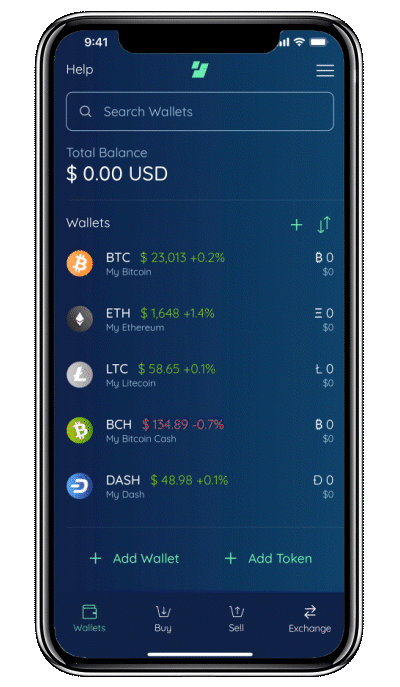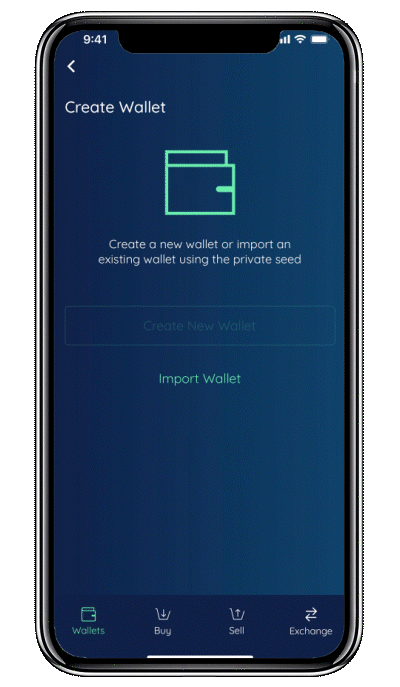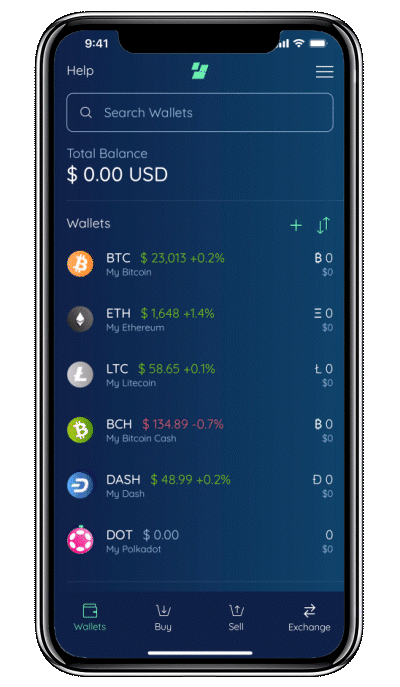In the latest release of Edge, we’ve added support for Polkadot (DOT), the industry’s 11th largest cryptocurrency by market cap.
What is DOT?
DOT is the internal cryptocurrency of Polkadot, a Proof-of-Stake (PoS) blockchain protocol designed to connect multiple unrelated networks in a fast, scalable, and secure way.
DOT has two main functions within the Polkadot network: 1) it serves as a governance token, allowing holders to have a say on the protocol’s future developments; 2) it is used for staking, which is the method of verifying transactions on the Polkadot network, and issuing new DOT.
There’s no maximum cap on the number of DOT coins that can circulate. This means that DOT is an inflationary cryptocurrency, i.e. its circulating supply will continue to increase.
This inflation level is set at 10% annually, subject to change through a governance vote.
Following Polkadot’s first governance vote, the DOT redenomination took place in August 2020, changing the precision of DOT from 12 decimal places to 10 decimal places and increasing the supply from 10 million to 1 billion.
Currently, the DOT token has a total supply of about 1.2 billion, according to data provided by Polkastats.
What is Polkadot?
As described on the project’s official website, Polkadot is “a scalable, interoperable and secure network protocol for the next web.” In other words, Polkadot promises to create an internet of interoperable blockchains for the decentralized web, or Web 3.0, a term Dr. Gavin Wood, the project’s inventor, coined back in 2014.
The Polkadot network comprises a main blockchain called the Relay Chain and multiple user-created parallel chains called Parachains. It also has a “bridge,” or a connecting layer that allows both value and data to be transferred between different blockchains.
According to Polkadot’s official website, “this makes it possible to build applications that get permissioned data from a private blockchain and use it on a public blockchain. For instance, a school’s private, permissioned academic records chain could send a proof to a degree-verification smart contract on a public chain.”
Being the heart of the Polkadot network, the Relay Chain is responsible for ensuring consensus and transaction verification among parachains – the application-specific blockchain with its own logic and features.
Additionally, there are the so-called Parathreads that have similarities to Parachains, but are based on a pay-as-you-go model.
Who is developing Polkadot?
Polkadot is developed by Parity Technologies and the Web3 Foundation, a Swiss-based non-profit organization created with the goal of stewarding technologies and applications in the fields of decentralized web software protocols.
Dr. Gavin Wood, the co-founder of Parity and the founder of the Web3 Foundation, was one of the original co-founders of Ethereum, a popular smart contract platform, and the first Chief Technology Officer at the Ethereum Foundation. He also authored the Yellow Paper defining the Ethereum Virtual Machine (EVM), a computation engine underpinning Ethereum’s operating structure.
How is Polkadot different from Ethereum?
Given that Polkadot and Ethereum share a high-profile founder, there is some overlap between the way in which the two networks function.
Both Polkadot and Ethereum, which is currently running on a Proof of Work consensus algorithm with a planned transition to a PoS model (Ethereum 2.0), aim to provide a framework for developers to create decentralized applications (Dapps).
Both platforms include smart contract functionality, based on Solidity for Ethereum and Ink! – a domain specific language for writing smart contracts in Rust – for Polkadot, respectively, and pursue a similar approach to a scaling strategy. The latter is based on parallelized execution – whereas each thread of execution in Ethereum 2.0 is called a shard, in Polkadot it is called a parachain or parathread.
There are, however, some key differences between Ethereum and Polkadot, such as design goals.
Ethereum is largely marketed as a platform for smart contract execution, while the aim of Polkadot is to provide a platform for building entire blockchains that can be integrated with each other.
Create your DOT wallet in a matter of seconds
With Edge, creating your DOT wallet is only a couple of taps away:
1. On the Wallets screen in Edge, tap “Add Wallet” and choose DOT as your wallet type

2. Specify the fiat currency denomination and name your wallet

3. Confirm details, and your wallet is created

Want to participate in the Polkadot network? Try Edge today!
With seamless wallet creation and readily available exchange integrations, all inside of an easy to use self-custody application, Edge has now introduced another way for DOT users to be part of the network.
Edge was designed to be easy enough for the everyday user, while including functionality even advanced enthusiasts appreciate. We’re excited to be supporting DOT as the token is garnering increased adoption across the crypto space.
For those interested in using DOT in Edge, click here. To stay up to date with Edge company announcements and the latest developments in the crypto space, be sure to sign up for our newsletter below.
